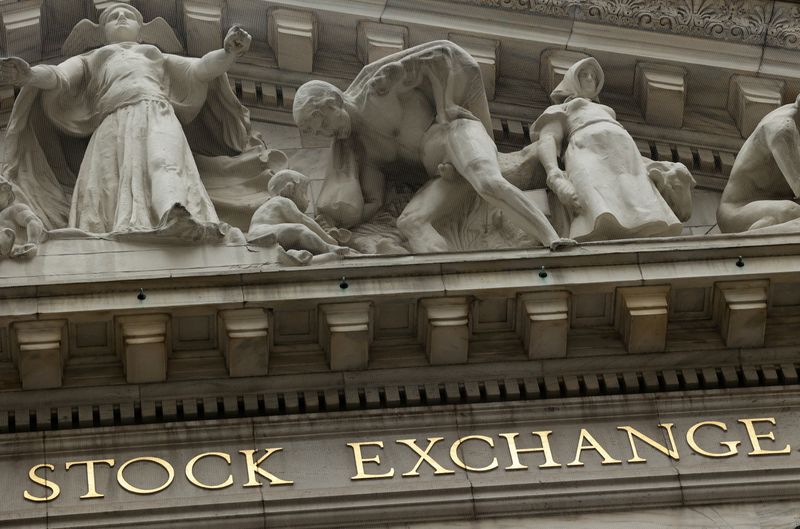By Jamie McGeever
ORLANDO, Florida (Reuters) -Theory suggests that the divergence in value between U.S. stocks and bonds will eventually get so extreme that investors will need to reduce their exposure to ultra-pricey equities and start loading up on beaten-down Treasuries. If the so-called U.S. 'equity risk premium' (ERP) can be considered a useful indicator, that point may soon be upon us.
The ERP can be measured in various ways, but it is essentially the difference between the earnings yield on the S&P 500 index and the 10-year Treasury yield. In 'normal' times the ERP should be positive, offering investors a reasonable premium for holding stocks over 'risk-free' government debt.
These are not normal times though. Long-term bond yields are soaring even though the Federal Reserve has begun to cut interest rates, as sticky inflation and Washington's worrisome debt and spending trajectory are rattling investors.
Meanwhile, the artificial intelligence frenzy and 'U.S. exceptionalism' narrative led by a handful of Mega Cap tech stocks have fueled a boom on Wall Street that has lifted aggregate valuations to their highest level in years – or even decades by some measures.
As a result, the ERP is collapsing. By some gauges it is the lowest in almost a quarter of a century, and has even slipped into negative territory. If the 10-year Treasury yield continues rising, the ERP is liable to shrink even further.
So stocks look expensive, nominally and relative to bonds, but does that mean it's time to hit sell?
AMBER TO GREEN
This situation is ringing alarms for many equity strategists. Societe Generale (EPA:SOGN)'s team calculates that a tick up in the 10-year yield to 5.00% would push the ERP into "unhealthy territory" although probably wouldn't cause much pain in the S&P 500. They argue the "buy" signal for bonds will flash brighter when the Treasury yield approaches nominal trend growth, currently around 5.2%.
"We believe this should be the anchor point for the bond scare on the growth outlook and the point where U.S. bonds become fundamentally appealing," they wrote this week.
The 10-year yield hit 4.79% on Friday, the highest since November 2023, and more than 100 basis points higher than when the Fed started lowering its policy rate in September.
Of course, there is no one trigger to buy stocks or bonds, far less a specific number or single relative value metric. Portfolio adjustment is a complex and often lengthy deliberation, and investors currently have to navigate a host of unknown variables like the incoming Trump administration's trade policies and the Fed's next steps.
What's more, the ERP can send different signals depending on what's driving it and the wider macroeconomic context.
UNSUSTAINABLE
In March 2009, the ERP soared to a historic high of 7% as bond yields were flattened near zero after the collapse of Lehman Brothers six months earlier. March 2009 turned out to be the stock market low, with the S&P 500 bottoming out at an eerie 666 points.
Similarly, the ERP spike towards 6% in April 2020 at the onset of the COVID-19 pandemic was fueled by the collapse in Treasury yields and also signaled the equity market low.
The consensus opinion today is that the recent decline in the ERP is primarily being driven by the yield spike, suggesting bonds are becoming attractive on a relative value basis.
Investors tend to like nice round numbers, so a 10-year bond yield of 5.00% would likely draw in some buyers, but portfolio managers may be hesitant to go all in, given the current uncertainty surrounding U.S. fiscal and monetary policy.
As Unlimited's Bob Elliott notes, it is an unsustainable divergence - either yields need to fall enough to justify existing equity prices, or stocks need to fall to reflect higher rates.

The "buy bonds" and "sell stocks" signals may be flashing amber, but determining when they will turn to green remains a challenge.
(The opinions expressed here are those of the author, a columnist for Reuters.)
(By Jamie McGeever; Editing by Andrea Ricci)